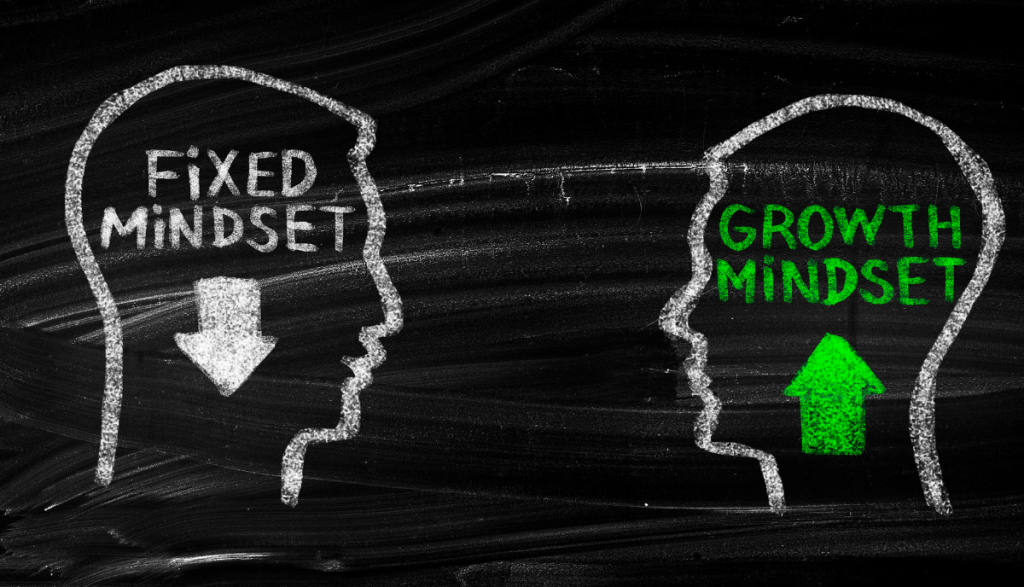Mindsets play an important role in our lives, especially when it comes to learning. A mindset is made up of the beliefs and thoughts that shape our habits and how we handle situations.
The idea of growth and fixed mindsets became popular with the book Mindset, by Carol Dweck.
People who hold a fixed mindset believe that qualities are fixed traits that cannot change. In this view, success can only be credited to the talent or intelligence that is already inherent within a person. This can lead to discouragement and limitations because they think there isn’t much that they can do to change their circumstances.
However, people with a growth mindset hold the opposite belief. According to Dweck, “In a growth mindset, people believe that their most basic abilities can be developed through dedication and hard work—brains and talent are just the starting point. This view creates a love of learning and a resilience that is essential for great accomplishment.”
Mindsets in Education
When this book found its way into the hands of educators, many schools began reflecting on if they had a growth mindset or a fixed mindset with their students. Teachers spent time in professional development opportunities looking deeply at their students and how they, as teachers, approached student learning. This shift into a growth mindset for students really made a positive impact on students academically, socially, and emotionally.
Teachers also used this language when working with their students. By teaching students the difference between a fixed and a growth mindset, the students themselves were able to identify their own beliefs and practice moving toward a growth mindset.
Although many educators practice this ideology with students, not all campus leaders hold the same view for teachers and staff, or even themselves. However, building a growth mindset with your teachers can have a tremendous impact on their professional development and positively impact student learning.
Allowing Teachers to Solve Problems
In her popular TedTalk, Dweck describes two ways to think about a problem that’s slightly too hard for you to solve. Operating in this space — just outside of your comfort zone — is the key to improving your performance. It’s also the critical element to deliberate practice. People approach these problems with the two mindsets: “Are you not smart enough to solve it …. or have you just not solved it yet?”
As campus leaders, we have many things that we need to juggle while ensuring students are learning. Many times we are solving problems for teachers without giving them the opportunity to solve it for themselves. We feel like we don’t have time for teachers to figure it out. We have to get the academic results, and we need them now!
But if you think about all of the great thinking, innovative practices, and problem-solving you are leaving on the table when you don’t approach your teachers and staff with a growth mindset, you are really doing a disservice to your staff, teachers, and students.
Growth Mindset Principles
Let’s take these principles and apply them to how leaders can develop a growth mindset with their staff.

- The nature of feedback should focus on the hard work and the processes they are working through.
- Encourage teachers to challenge themselves and persist through struggle.
- Encourage taking risks.
- Emphasize effort and progress over the final outcome and focus on improvement.
- As a campus, value taking on challenges, exerting effort, and surmounting obstacles more than natural or innate talent.
- Conduct interventions to develop growth mindsets. Teach that intelligence is expandable, and that their brains are like any other muscle that can be strengthened with use and hard work.
- Evaluate teachers based on their growth. When a teacher says they can’t do something or aren’t good at it, add the word “yet” to convey that ability is fluid.
Practice with These Growth Mindset Exercises
In addition, Dweck (2010) and Moss (2008) recommend the following exercises to encourage a growth mindset. I have substituted “teacher” for “student” in these examples because what we do for students can be just as effective with adults.
- Ask teachers to think about a colleague who has changed the most over the years. This activity has proven to instill the belief that humans are malleable.
- Convey phrases that highlight the capacity to change, such as, “It’s never too late to learn” or “Experience is the best teacher.”
- Include material on geniuses or individuals who have made significant contributions to their fields, emphasizing their hard work and effort.
Developing a growth mindset is not easy work, but the return on the investment can pay off exponentially. Teachers will have higher job satisfaction, leading to teachers staying in the classroom longer. They will also be more likely to take risks and try new things that encourage student growth. Which, in the end, is what we’re all striving to accomplish.
Ellen Willoughby is a Project Coordinator for Educator Evaluation and Leadership here at Region 13.





Add comment